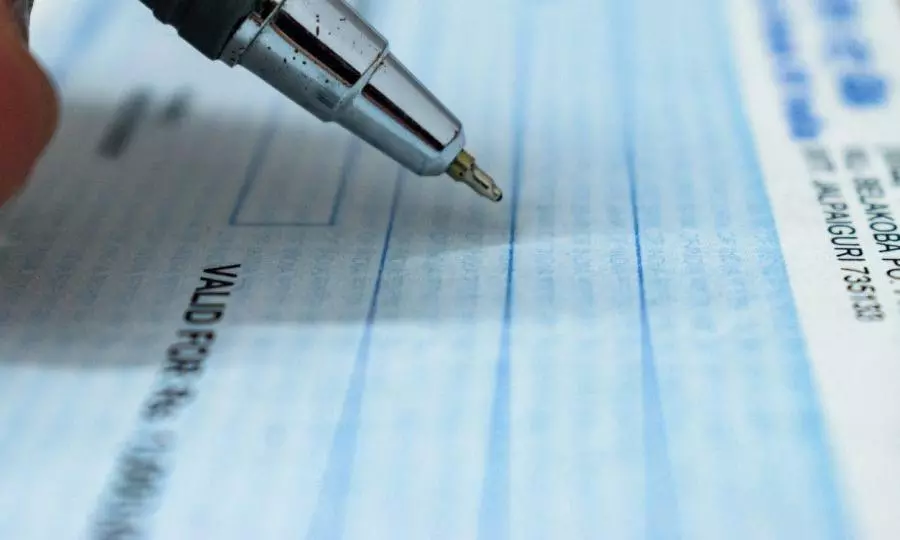
In digital payments era, it's time for India to say goodbye to cheques
RBI’s recent initiative to modernise cheque clearance through continuous same-day settlement asks a timely question - why are we still using cheques?

The Reserve Bank of India (RBI) has introduced a new system for cheque clearance, effective October 4, aimed at speeding up the settlement process.
Under the new mechanism, cheques are no longer cleared in fixed batches. Instead, they are processed continuously throughout the day, allowing funds to be credited to the accounts of beneficiaries on the same day.
Cheques deposited between 10 am and 4 pm are now scanned and sent for clearing instantly. Starting from 11 am, interbank settlements occur every hour. The paying bank must confirm the transaction by 7 pm, failing which the cheque is auto-approved.
Also Read: Are silver ETFs the next big thing for Indian investors?
Before this change, cheque clearance typically took one to two business days. With the new system, payments can be settled within hours, offering greater convenience to individuals and businesses that still depend on paper-based transactions.
Relevance of cheques
While the new system enhances efficiency, it also raises an important question: Do cheques still have a place in India’s modern payment ecosystem?
For more than a century, cheques have been the backbone of non-cash transactions. However, their use has sharply declined. Today, only a small fraction of total payments in India is made through cheques, as most consumers and businesses have shifted to digital payment modes such as UPI, NEFT, RTGS, and IMPS.
Globally, cheques are widely viewed as obsolete instruments, gradually being phased out by advanced economies in favour of faster, safer, and more cost-efficient systems.
Global experience
Several countries have either completely eliminated cheques or are in the process of doing so:
♦ Belgium and South Africa reported zero cheque usage as early as 2021.
♦ Australia stopped issuing new cheques in 2021, and by 2024, they accounted for just 0.2 per cent of all payments.
♦ New Zealand banks discontinued both issuing and accepting cheques in 2021.
♦ Singapore plans to phase out cheques completely by 2027, as users transition to digital alternatives.
♦ In the United Kingdom, cheque usage has declined steadily for decades, with most transactions now conducted electronically.
These examples demonstrate that even without a unified platform like UPI, many nations have successfully embraced digital payment ecosystems.
Digital payments growth
India’s digital payment landscape has evolved dramatically in the past decade. According to the RBI:
♦ Digital transactions have grown thirty eightfold in volume and more than threefold in value over the last ten years.
♦ Between 2019 and 2024, the compound annual growth rate (CAGR) was 46 per cent (volume) and 10 per cent (value).
♦ In the first half of 2025, cheques accounted for merely 0.2 per cent of total transactions by volume and 2.3 per cent by value.
India now hosts one of the world’s most diverse and dynamic payment ecosystems, encompassing UPI, IMPS, NEFT, RTGS, credit and debit cards, digital wallets, and mobile banking platforms. The Unified Payments Interface (UPI), in particular, has emerged as the world’s largest real-time retail payment system, offering unmatched convenience and interoperability.
Why cheques should be phased out
There are mulitple reasons why it makes sense to phase out cheques. Some of these are:
High operational costs: Printing, transporting, and processing cheques involve significant administrative expenditure for banks and users alike.
Vulnerability to fraud: Cheques are prone to forgery, alterations, and misuse, posing persistent security risks.
Slower transaction speed: Even under the upgraded clearance system, cheque processing takes several hours, whereas electronic payments settle instantly.
Uncertain payment assurance: Cheques may bounce due to insufficient funds or technical errors. Currently, around 4.3 million cheque-bounce cases are pending in Indian courts, accounting for over half of all pending cases in some states.
Also Read: Buying gold? Go by how much your portfolio needs, not by bullion rate
As the cheque bounce cases continue to clog the court’s docket, constituting 50 per cent of all pending cases in some states, the Supreme Court has recently issued guidelines to speed up the disposal of such cases, including the use of UPI links as a mode of payment to settle the dispute in court.
Eliminating cheques would reduce this judicial burden significantly, freeing valuable legal resources.
The way forward
The RBI’s initiative to modernise cheque clearance reflects a commitment to operational efficiency and user convenience. However, it also underscores the diminishing relevance of paper-based instruments in an era dominated by real-time, mobile-driven, and interoperable digital payment systems.
Phasing out cheques in a planned and gradual manner — beginning with government payments and corporate transactions — would align India with global best practices and further strengthen the country’s digital financial infrastructure.
The new cheque clearance system is a commendable step toward faster fund availability. Yet, the long-term goal should be to transition India to a completely digital payment ecosystem. With the rapid expansion of UPI and other electronic modes, the cheque has outlived its utility.
A structured phase-out would not only reduce costs and fraud but also enhance financial efficiency, transparency, and judicial relief — marking another milestone in India’s digital transformation journey.

